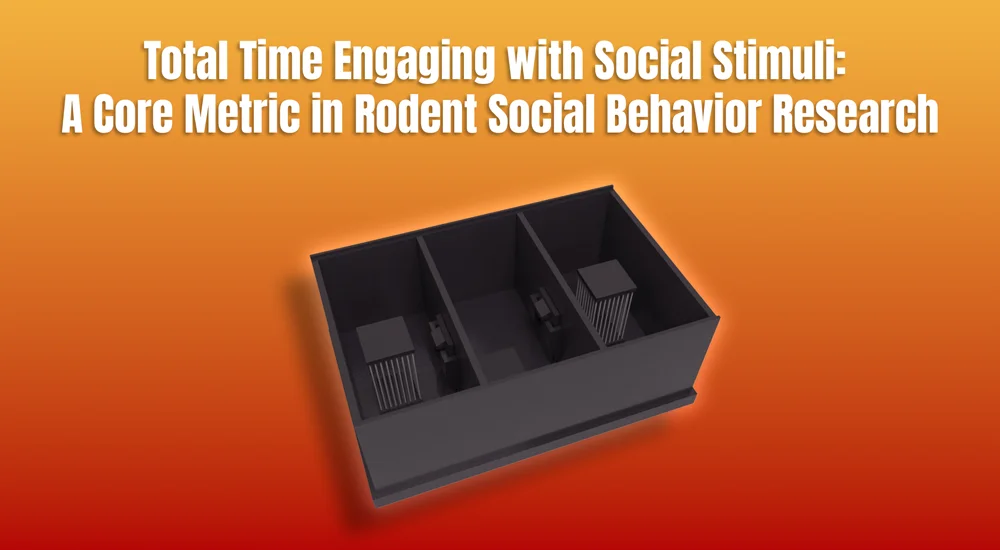

Microbiology is the study of tiny, microscopic organisms called microbes.[1] For studies like learning the shape and size of organisms, microscopic study is the preferable approach. However, when it comes to genetic analysis, molecular functions, and metabolic studies, the microbes are required to be cultured in labs in their preferable environment.
To ensure a particular strain of microbe is maintained in the cultures, strict aseptic or sterile conditions are required to be maintained in the labs. Moreover, people working in these labs also have a high likelihood of contracting diseases and infections caused by cultured microbes.
Therefore, standard practices exist to ensure a safe work environment for people and the containment of the microbe inside the labs. These practices came into existence when scientists noted that there was a history of people contracting diseases, such as typhoid, tetanus, and cholera, that were associated with laboratories.
Some of these reports include the[2]:
These studies emphasized the importance of learning and implementing biosafety measures in microbiology labs, especially while working with life-threatening microbes, such as viruses.
Several safe methods are available today that allow for better containment of microbes in labs, maintain their favorable environment, and prevent lab personnel from becoming infected with these infectious agents. This complete process is known as the containment of microbes and it’s divided into two[2]:
The containment of microbes is composed of three elements: safety equipment, best laboratory practices and techniques, and facility design.
It’s also called the primary barrier which includes biosafety cabinets and a variety of other enclosed containers. The biosafety cabinet is beneficial to contain infectious aerosols, which are generated while performing microbiological procedures.
The biosafety cabinets are categorized into three groups: Class I, Class II, and Class III biosafety cabinets.
Class I and class II biosafety cabinets are open-fronted biological safety cabinets, thus they only offer partial containment. Class III biosafety cabinets provide maximum protection level to both laboratory personnel and the environment.
Other than biosafety cabinets, some other equipment, such as gloves, lab coats, shoe covers, lab gowns, face shields, respirators, boots, and safety glasses provide an extra level of protection to lab personnel.[2]
Standard laboratory training and practices are essential for the containment of microbial organisms in labs. Lab personnel should be aware of the potential hazards of infected materials and agents they are required to work with. They must be taught standard practices and microbiological techniques for handling and maintaining such materials.
The lab director has an important role to play when it comes to choosing appropriate training for lab personnel. Moreover, when the safety measures and training are not sufficient to contain the spread of infectious agents, they are required to select additional practices to minimize/eliminate hazards associated with infectious materials/agents.
Additionally, a biosafety operation manual should be available in all labs explaining the hazards associated with each infectious agent and the procedures to minimize the risks.
A lab expert or scientist trained in using laboratory techniques, aware of lab safety measures, and hazards associated with working with an infectious agent must direct such lab activities.[2]
Appropriate facility design and engineering need to supplement lab personnel’s efforts, techniques, and best safety practices for proper containment and safety of people, inside or outside the labs. It serves as an additional barrier against the spread of infectious agents.
Based on the level of containment, the facility design is of three types[2]:
It includes the space created for working with viable infectious agents or materials that are not infectious or potentially have low levels of hazard, with biosafety level 1 and level 2 facilities.
For example, the locations of animal rooms and waste staging areas, which are known to be sources of general contamination, should not be adjacent to patient care areas, but they can be in the same building or complex.
Moreover, it is important to separate the public areas and offices needed by non-laboratory staff from the laboratories.
The containment lab contains some specialized engineering features to deal with potential hazards and protect lab personnel, the environment, and the community. It’s described as a biosafety level 3 facility.
Its access controls and specialized ventilation system are the distinguishing features of the containment lab.
The lab settings can be the building itself, a single module within it, or a complex of modules. And regardless of the situation, the laboratory is always separated from public areas by a controlled access zone.
This lab has special engineering and containment systems. It permits the safe handling of infectious agents that can be extremely dangerous to lab workers or can cause epidemic diseases. This level of facility is described as biosafety level 4.
The lab should be built in isolated areas within the building or a separate building. It has secondary barriers to protect the environment from hazardous materials.
The barrier can be airlocks or liquid disinfectant barriers, sealed entrances to the laboratory, a treatment system to eliminate contaminants from exhaust air, and a clothes-change room and a shower room adjacent to the laboratory ventilation system.
Biosafety levels are divided into four levels based on their combination of safety equipment, laboratory techniques, best practices, and appropriate laboratory facilities to perform operations, control hazards by infectious agents, and run lab activities safely.
The combination of elements, designed and fit into these four levels decides the extent or degree of protection the labs provide to lab personnel, the environment, and the community.
The following is a brief overview of all four protection levels in ascending order.
The standard practices, equipment, and facilities included in this level suit undergraduate, secondary education training, or any other teaching labs or facilities where experiments are performed on viable microbial strains that don’t infect any healthy adult human.
A few examples of these types of strains include Naegleria gruberi, Bacillus subtilis, and infectious canine hepatitis virus[2].
Even so, some opportunistic organisms can infect young, elderly, immunodeficient, or immunosuppressed individuals.
Standard microbiological practices:
Special practices:
Containment equipment:
Laboratory facilities:
The biosafety level 2 practices and equipment are suitable for diagnostic, clinical, and facilities that work with a wide range of indigenous moderate-risk infectious agents.
These agents are generally associated with some human diseases with different degrees of severity. A few examples of the microbes in this category include salmonellae, Hepatitis B virus, and Toxoplasma spp[2].
Standard microbiological practices:
Special practices:
Containment equipment:
Lab personnel is required to use biosafety cabinets and personal protective equipment to perform lab procedures, especially when:
Laboratory facilities:
The lab facilities are similar to Biosafety Level 1, except:
This level of biosafety is applicable to research, teaching, diagnostic, clinical, and production facilities that work with indigenous or exotic agents, and where aerosols may pose a threat of infection and can have lethal consequences.
Examples of agents for which biosafety level 3 is required include St. Louis encephalitis virus, Mycobacterium tuberculosis, and Coxiella burnetii[2].
Standard microbiological practices:
Special practices:
In addition to the practices mentioned in Biosafety Level 2, it includes:
Containment equipment:
Laboratory facilities:
In addition to the facilities mentioned in Biosafety level 1, it also includes:
The level of safety procedures and equipment are applicable when labs work with agents that can cause life-threatening diseases, such as the Lassa fever virus[2].
Standard microbiological practices:
Special practices:
In addition to practices mentioned in Biosafety Level 3:
Containment equipment:
Laboratory facilities:
In addition to facilities mentioned in biosafety level 3:
To learn all about the facilities, equipment, and special practices of microbiology labs, refer to the materials mentioned in the reference section.
Microbiology laboratories dealing with infectious agents that may pose a threat to laboratory personnel require biosafety measures. These measures include information on standard microbiological practices and procedures, safety equipment, and biosafety facilities.
However, not all microbes possess the same level of threat to humans after their exposure. Therefore, according to the level of danger posed to the public by an infectious agent, four types of biosafety levels are created for the safety of lab personnel, the community, and the environment. According to the levels of their biosafety, the labs are ordered as: Biosafety Level 1, Biosafety Level 2, Biosafety Level 3, and Biosafety Level 4.
Considering the history of people contracting diseases, safety measures are a must in microbial labs. And following these rules, will not only help the people working in labs, but also the people around them, and the whole community.
In behavioral neuroscience, the Open Field Test (OFT) remains one of the most widely used assays to evaluate rodent models of affect, cognition, and motivation. It provides a non-invasive framework for examining how animals respond to novelty, stress, and pharmacological or environmental manipulations. Among the test’s core metrics, the percentage of time spent in the center zone offers a uniquely normalized and sensitive measure of an animal’s emotional reactivity and willingness to engage with a potentially risky environment.
This metric is calculated as the proportion of time spent in the central area of the arena—typically the inner 25%—relative to the entire session duration. By normalizing this value, researchers gain a behaviorally informative variable that is resilient to fluctuations in session length or overall movement levels. This makes it especially valuable in comparative analyses, longitudinal monitoring, and cross-model validation.
Unlike raw center duration, which can be affected by trial design inconsistencies, the percentage-based measure enables clearer comparisons across animals, treatments, and conditions. It plays a key role in identifying trait anxiety, avoidance behavior, risk-taking tendencies, and environmental adaptation, making it indispensable in both basic and translational research contexts.
Whereas simple center duration provides absolute time, the percentage-based metric introduces greater interpretability and reproducibility, especially when comparing different animal models, treatment conditions, or experimental setups. It is particularly effective for quantifying avoidance behaviors, risk assessment strategies, and trait anxiety profiles in both acute and longitudinal designs.
This metric reflects the relative amount of time an animal chooses to spend in the open, exposed portion of the arena—typically defined as the inner 25% of a square or circular enclosure. Because rodents innately prefer the periphery (thigmotaxis), time in the center is inversely associated with anxiety-like behavior. As such, this percentage is considered a sensitive, normalized index of:
Critically, because this metric is normalized by session duration, it accommodates variability in activity levels or testing conditions. This makes it especially suitable for comparing across individuals, treatment groups, or timepoints in longitudinal studies.
A high percentage of center time indicates reduced anxiety, increased novelty-seeking, or pharmacological modulation (e.g., anxiolysis). Conversely, a low percentage suggests emotional inhibition, behavioral avoidance, or contextual hypervigilance. reduced anxiety, increased novelty-seeking, or pharmacological modulation (e.g., anxiolysis). Conversely, a low percentage suggests emotional inhibition, behavioral avoidance, or contextual hypervigilance.
The percentage of center time is one of the most direct, unconditioned readouts of anxiety-like behavior in rodents. It is frequently reduced in models of PTSD, chronic stress, or early-life adversity, where animals exhibit persistent avoidance of the center due to heightened emotional reactivity. This metric can also distinguish between acute anxiety responses and enduring trait anxiety, especially in longitudinal or developmental studies. Its normalized nature makes it ideal for comparing across cohorts with variable locomotor profiles, helping researchers detect true affective changes rather than activity-based confounds.
Rodents that spend more time in the center zone typically exhibit broader and more flexible exploration strategies. This behavior reflects not only reduced anxiety but also cognitive engagement and environmental curiosity. High center percentage is associated with robust spatial learning, attentional scanning, and memory encoding functions, supported by coordinated activation in the prefrontal cortex, hippocampus, and basal forebrain. In contrast, reduced center engagement may signal spatial rigidity, attentional narrowing, or cognitive withdrawal, particularly in models of neurodegeneration or aging.
The open field test remains one of the most widely accepted platforms for testing anxiolytic and psychotropic drugs. The percentage of center time reliably increases following administration of anxiolytic agents such as benzodiazepines, SSRIs, and GABA-A receptor agonists. This metric serves as a sensitive and reproducible endpoint in preclinical dose-finding studies, mechanistic pharmacology, and compound screening pipelines. It also aids in differentiating true anxiolytic effects from sedation or motor suppression by integrating with other behavioral parameters like distance traveled and entry count (Prut & Belzung, 2003).
Sex-based differences in emotional regulation often manifest in open field behavior, with female rodents generally exhibiting higher variability in center zone metrics due to hormonal cycling. For example, estrogen has been shown to facilitate exploratory behavior and increase center occupancy, while progesterone and stress-induced corticosterone often reduce it. Studies involving gonadectomy, hormone replacement, or sex-specific genetic knockouts use this metric to quantify the impact of endocrine factors on anxiety and exploratory behavior. As such, it remains a vital tool for dissecting sex-dependent neurobehavioral dynamics.
The percentage of center time is one of the most direct, unconditioned readouts of anxiety-like behavior in rodents. It is frequently reduced in models of PTSD, chronic stress, or early-life adversity. Because it is normalized, this metric is especially helpful for distinguishing between genuine avoidance and low general activity.
Environmental Control: Uniformity in environmental conditions is essential. Lighting should be evenly diffused to avoid shadow bias, and noise should be minimized to prevent stress-induced variability. The arena must be cleaned between trials using odor-neutral solutions to eliminate scent trails or pheromone cues that may affect zone preference. Any variation in these conditions can introduce systematic bias in center zone behavior. Use consistent definitions of the center zone (commonly 25% of total area) to allow valid comparisons. Software-based segmentation enhances spatial precision.
Evaluating how center time evolves across the duration of a session—divided into early, middle, and late thirds—provides insight into behavioral transitions and adaptive responses. Animals may begin by avoiding the center, only to gradually increase center time as they habituate to the environment. Conversely, persistently low center time across the session can signal prolonged anxiety, fear generalization, or a trait-like avoidance phenotype.
To validate the significance of center time percentage, it should be examined alongside results from other anxiety-related tests such as the Elevated Plus Maze, Light-Dark Box, or Novelty Suppressed Feeding. Concordance across paradigms supports the reliability of center time as a trait marker, while discordance may indicate task-specific reactivity or behavioral dissociation.
When paired with high-resolution scoring of behavioral events such as rearing, grooming, defecation, or immobility, center time offers a richer view of the animal’s internal state. For example, an animal that spends substantial time in the center while grooming may be coping with mild stress, while another that remains immobile in the periphery may be experiencing more severe anxiety. Microstructure analysis aids in decoding the complexity behind spatial behavior.
Animals naturally vary in their exploratory style. By analyzing percentage of center time across subjects, researchers can identify behavioral subgroups—such as consistently bold individuals who frequently explore the center versus cautious animals that remain along the periphery. These classifications can be used to examine predictors of drug response, resilience to stress, or vulnerability to neuropsychiatric disorders.
In studies with large cohorts or multiple behavioral variables, machine learning techniques such as hierarchical clustering or principal component analysis can incorporate center time percentage to discover novel phenotypic groupings. These data-driven approaches help uncover latent dimensions of behavior that may not be visible through univariate analyses alone.
Total locomotion helps contextualize center time. Low percentage values in animals with minimal movement may reflect sedation or fatigue, while similar values in high-mobility subjects suggest deliberate avoidance. This metric helps distinguish emotional versus motor causes of low center engagement.
This measure indicates how often the animal initiates exploration of the center zone. When combined with percentage of time, it differentiates between frequent but brief visits (indicative of anxiety or impulsivity) versus fewer but sustained center engagements (suggesting comfort and behavioral confidence).
The delay before the first center entry reflects initial threat appraisal. Longer latencies may be associated with heightened fear or low motivation, while shorter latencies are typically linked to exploratory drive or low anxiety.
Time spent hugging the walls offers a spatial counterbalance to center metrics. High thigmotaxis and low center time jointly support an interpretation of strong avoidance behavior. This inverse relationship helps triangulate affective and motivational states.
By expressing center zone activity as a proportion of total trial time, researchers gain a metric that is resistant to session variability and more readily comparable across time, treatment, and model conditions. This normalized measure enhances reproducibility and statistical power, particularly in multi-cohort or cross-laboratory designs.
For experimental designs aimed at assessing anxiety, exploratory strategy, or affective state, the percentage of time spent in the center offers one of the most robust and interpretable measures available in the Open Field Test.
Written by researchers, for researchers — powered by Conduct Science.








Monday – Friday
9 AM – 5 PM EST
DISCLAIMER: ConductScience and affiliate products are NOT designed for human consumption, testing, or clinical utilization. They are designed for pre-clinical utilization only. Customers purchasing apparatus for the purposes of scientific research or veterinary care affirm adherence to applicable regulatory bodies for the country in which their research or care is conducted.